Natural Health Solutions
- The Well (Home Page)
- Water Cures Blog
- How To Do Water Cures
- What is Water Cures?
- Electrolytes & Salt
- Drinking Water
- Hire a Hydration Coach
- Acid Reflux
- Addiction Treatment
- Allergy Relief
- Blood
- Bones and Joints
- BP / Heart / Vascular
- Brain / Head / Mental
- Cancer
- Chronic Fatigue
- Cramps No More
- Dehydration
- Edema
- Fibromyalgia
- HIV / AIDS
- Immune System
- Lungs / Respiratory / Cough
- Lupus
- Lyme Disease
- Multiple Sclerosis
- Pain
- Skin Care
- Urinary Tract Infection
- Womens Health
- Water & Weight Loss
- Student Grades
- Survivalist Health Care
- Pet Water Cures
- Hydration Coach
- Testimonials
- My Water Cures
- FAQ
- In The News
- Volunteer
- About / Contact
- Red Light Therapy
- Live Blood Microscopy
Symptoms of Lyme Disease
It is easy to mistake the symptoms of Lyme disease for other diseases. It is possible any of close to two dozen bacterial infections could cause symptoms that could currently be labeled Lyme disease when they are actually a yet not understood infection.
Dr. Richard Horowitz calls what most of us know as Lyme disease as multiple systemic infectious disease syndrome (MSIDS). The reality, Lyme disease and the co-infections have numerous facets.
When it comes to the symptoms of Lyme disease, there are so many and the ones experienced by the infected are so varied, it becomes difficult to diagnose.
First Symptoms of Lyme Disease
The Bulls Eye RashFirst Symptoms of Lyme DiseaseThe first and earliest of the Lyme disease symptoms is the bulls eye rash may appear by some estimates in less than 50% of those who are infected. The actual number who get the bulls eye rash is probably far less. Called erythema migrans or EM, if it does appear, generally this happens within a week of the bite and it fades within the following week. It may expand up to 12 inches in size or even larger in those who it appears in.
While some medical sites suggest that up to 80% of those infected get the bulls eye rash, they offer no evidence of this claim. with over 300,000 people infected annually, it is rarely seen. Additionally, the EM may be in a place that is not observable and thus many do not know they are infected till months or even years later when the many different symptoms appear.
Additionally, the appearance of the bulls eye does not mean you have Lyme disease. Lyme tests are not definitive and neither are the appearance of the Bulls Eye..
Not All Bulls Eye Rash are Lyme Disease.
Many published Lime literate doctors have suggested that most people do not get the rash or if they do, it was never seen.
Some but not all experience generalized fatigue, chills, fever, headache, muscle and joint aches, swollen lymph nodes. Some have no symptoms at all.
Generalized weaknessMental
Headaches (may be severe) and neck pain and stiffness (meningitis).
Dizzy feeling
Visual problems
Become short of breath with minimal activity
Pain in hands and feet that comes and goes
Pains in the area of the liver that comes and goes
Pains in the kidneys that comes and goes or may migrate from one side to the other
Pain migrating throughout the body or organs. (pain will start at one point and over minutes or more, migrate to another point, feeling like it is crawling inside you from one place to another)
Short-term memory lossNervous System Symptoms Lyme Disease
Brain Fog
Depression
Lack of drive No motivation for the activities of daily living
Difficulty sleeping (getting as little as a few hours sleep at night)
Foggy memory and thinkin
Nerve PainMusculoskeletal Symptoms Lyme Disease
Numbness, tingling in the feet and hands that comes and goes.
Coldness in the feet and hands that comes and goes.
Shooting electrical like sensations, often in lower extremities
Night sweats (with no indication of TB)
Balance and walking difficulty (this is both a neurological and a muscle problem)
Arthritis painBlood
Arthritis pains that come and go regardless of the weather or barometric pressure
Vision problems
Excruciating knee pain that comes and goes (pseudo gout)
Arthritis like knee pain
Mild problems with balance that may get worse
Severe joint pain and swelling in the hips and other large joints.
Facial droop on one or both sides of face (called Bell's palsy).
Pain in tendons, muscles, joints and bones that comes and goes.
Anemia
Irregular shaped red blood cells
Rouleau formation of red blood cells
Early signs of DIC (Disseminated intravascular coagulation)
Early signs of myeloproliferative disorders
Cardio Vascular
Irregular heart beats or palpitations (called Lyme carditis)Psychological Disease
Medical research from 1990 found that between 8 and 10% of all people being treated for Lyme disease have symptoms indicating heart involvement. Because Lyme disease can escape detection or be misdiagnosed, there may be more cases than are known. It has been suggested that all patients suffering from heart disease symptoms who live in regions where Lyme disease is prevalent should be screened for the Bb bacteria.
Feet and or leg edema, usually pitting edema
Idiopathic cardiomyopathy
Heart attack that could result in deathThis is a condition in which the heart muscle becomes weakened to the point that it cannot pump out enough blood to meet the demands of the body.
Heart conditions caused by Lyme disease are collectively known as Lyme “carditis.”
Atrial fibrillation
Chest pain
Syncope
Pancarditis
Pericarditis
Heart failure
Tachycardia
Cardiomegaly
Cardiomyopathy
Exertional dyspnea
Myocarditis, palpitations
Irregular heartbeat (arrhythmia)
Heart conditions your physician cannot explain
Blockages in the electrical impulse transmission between the atria and ventricles of the heart. Heart blockages because of Lyme often require pacemakers sudden cardiac death
Mental and emotional (psychiatric) problems (50 % of those with Lyme have psychiatric problems)Back to top of Symptoms of Lyme Disease
Behavioral disorders (including impulsive acts of aggression and violence)
Bipolar disorder (manic depression)
Chronic depression
Eating disorders
Hallucinations
Mood swings
Panic attacks
Paranoia
Dementia
Memory loss
Schizophrenia
Foggy thinking
Suicidal depression
Light and sound sensitivity
Bizarre, shifting, and even excruciating nerve pain
There may be more Symptoms of Lyme Disease. As we continue our research, we will add any new information to this section of the Water Cures website.
Recent Articles
-
Dark Screen Microscopy: What it is, does and what it can tell you.
Jul 07, 19 05:23 PM
Dark Screen Microscopy allows for a BioNutritional Auditi to look at your blood in its whole, live state -
About Water Cures and how water can help improve your health and life
Oct 25, 18 09:38 PM
About water cures: information on the Water Cures Protocol, Dr. Batmanghelidj and the founder of this site, Bob Butts.. -
Water Cures Testimonials
Apr 16, 18 09:26 PM
Water cures testimonials of those who improved their health using the water cures protocol.
October 22, 2018...
Robert Butts, founder of WaterCures.org passed away at the age of 83. He will be missed.

 |
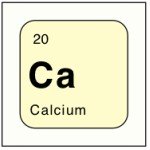 |
Warning: Research shows calcium supplements may be harmful to your health.
| Fixing Blood Disorders
Posted December 2016 |
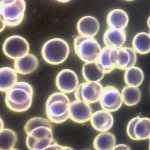 |
© 2016 Jonathan Steele
It is amazing how so many things that are new to us were common knowledge in the past. One basic practice of the Water Cures protocol is to drink at least 30-45 minutes before and 2 1/2 hours after a meal. This is not a new thought however. Notice what a magazine from 1925 had to say...
"Drink plenty of water two hours after each meal; drink none just before eating; and a small quantity if any at meal time. Do not take a bath until two hours after eating a meal, nor closer than one hour before eating. Drink a full glass of water both before and after the bath." (Golden Age, Sept. 9, 1925, pp. 784-785)
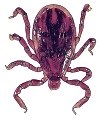 |
New in 2016
Cancer 1, Natural Cures 0
The War...is against...
Cancer Natural Cures
---------------------
| Hand Joint Pain: How Can I Make It Go Away? |
 |
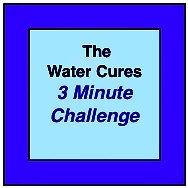 |
to try a no cost, scientifically proven way of improving your well being?
Click Here to try the 3 Minute Challenge
Find them right here!
 Shoulder Joint Pain Relief Shoulder Joint Pain Relief |
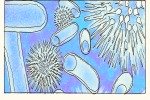 |
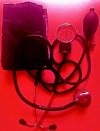 |
What Your Doctor's Not Telling You!
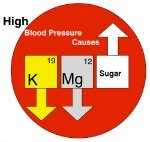 High Blood Pressure Causes High Blood Pressure Causes |
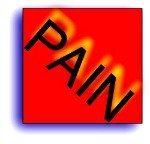 |
 |
We started expanding on the causes...
The weirdest...chimney sweep cancer. You won't believe where it strikes.
Our theory on...
Healthy Hydration for Athletics & the reason for hydration guideline failures in the past.
We speak to organizations small and large, private and corporate.
Our scientifically proven training works to improve performance and decrease lost days due to illness.
We are currently speaking to hospitals to train staff in ways to decrease the readmission rates in several disease processes that pose high risk of <30 day readmission.
We can cut the rates by up to 70%. Ask us how.
Nurse Jon for more information on hydrating to improve performance.
Here is the Science
We are not promoting increased salt intake. We are suggesting taking salt in amounts appropriate to your bodies needs, based on water needs. Our needs are not one size fits all.
Note: Do you have CHF or Kidney Disease? Then.....
THIS IS NOT FOR YOU.
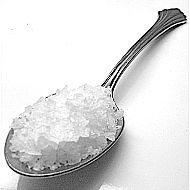 |
Read This Study
And Decide for Yourself
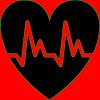 |
For Most of Us, No!
According to a JAMA study.
A Review of the above JAMA Article
Study: Salt May Not Be All Bad?
Listen to your body. Do not use this if you are under a doctors care. Do not stop taking medications without consulting your doctor. If you are on medications, consult your doctor if you start the Water Cures Protocol as it may change your needs.
 |
Click Here to Discover How
 |
Click Here
Sign Up for your biweekly newsletter.
 |
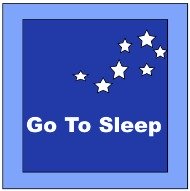 |
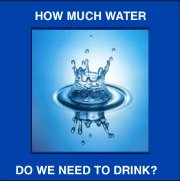 |
If you are looking for an affordable alternative natural health care for depression, consider the Water Cures protocol.
Like What You're Learning? Please share your likes on Facebook
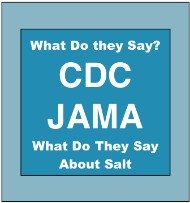 |
 |
 |
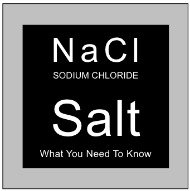 |
Hi, my name is Sharon. The webmaster of this site is my nurse, my personal water coach and my husband.
As this site was first being built, I had a headache and as usual took an Ibuprofen. Impatient for it to start working, I decided to try the Water Cures. I took a pinch of salt and a glass of water. Then I took a second pinch of salt and another glass of water. My headache was gone in less than 5 minutes.
From my personal experience, it usually takes 30 to 45 minutes for Ibuprofen to work. Some have found it takes ibuprofen 24 minutes to start working.
Yet on the Water Cures protocol, my headache was gone in 5 minutes.
Its simple: give your body what it needs and your body will give you what you need, the ability to feel great.
Water Cures was the solution for the elimination of my headache. It is what I will use from now on.
Why not give it a try yourself.
